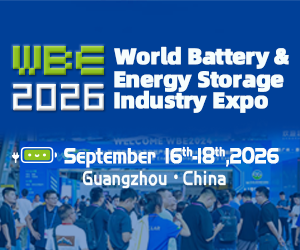Post - Blog
Repowering and corporate PPAs under the EU renewables directive
- 5 years ago (2020-07-07)
- Junior Isles


By Piotr Michajłow and Karol Lasocki , DWF

WBE (World Battery and Energy Storage Expo) 2026
The European Union renewables markets used to be incentivised by targets, mainly, with states obliged to achieve a certain share of renewables in the energy mix. Now the RED II Directive (EU 2018/2001) aims to offer additional means to foster and enhance that objective, and in particular the tool of simplified repowering of existing renewable installations and the tool of eliminating existing barriers for corporate energy sourcing. As we believe that these two will now be the main trends for the forthcoming years, a closer look at the RED II provisions is worthwhile. RED II needs to be implemented into national laws by 30 June 2021 and this means that there is bound to be a strong time incentive for a push in the mentioned direction.
Fostering Repowering
Due to rapid technological progress in wind and solar, generating assets that are fully depreciated can be replaced by new equipment. Thanks to this, already used sites will have a greater capacity and more efficiency with usually the same or less negative impact on the environment. Unfortunately, in many legal systems, repowering requires starting the whole permit-granting process from the very beginning. As a result, repowering often proves as challenging as developing a new greenfield project.
What is meant by repowering in the RED II? Not only is full renewal covered, but also partial renewal. Repowering does not necessarily involve substitution of generating units; it may pertain to operation systems and other equipment provided that the process is aimed at replacing or increasing capacity/efficiency (‘ repowering ' means renewing power plants that produce renewable energy, including the full or partial replacement of installations or operation systems and equipment for the purposes of replacing capacity or increasing the efficiency or capacity of the installation ').
Under the RED II member states should set up contact points for the permit-granting process for investments in renewables. These contact points (presumably designated administrative authority) should guide and facilitate the investor through the administrative process until one or several required permits are issued.
The permit-granting process for repowering of existing plants should be simplified and swift under the RED II, as compared to the default procedures. The length of the permit-granting process in this case should not exceed one year and under exceptional circumstances, such as when a repowering project impacts substantially the grid or the original capacity, the size or performance of the installation, it can be extended by up to one more year. This is significantly shorter than the default term for the permit-granting process for greenfield projects. Default term of the permit-granting process under the RED II is two years plus a year's possible extension due to extraordinary circumstances. It is however a pity that the duration of the environmental impact assessment, judicial appeals and other remedies, including complaints, do not count towards the new deadlines and that they could be extended for the duration of such procedures.
Enabling Corporate PPAs
Corporate energy sourcing is a recent phenomenon consisting of companies procuring green electricity either by themselves (self-generation) or directly from a producer, in some forms completely avoiding the services of intermediating energy trading companies. It enables investors in renewables to secure a long-term stream of revenues, sometimes for a fixed price, and make projects bankable, even without participation in public support mechanisms. Buying electricity directly from producers, often small and medium-sized, under so-called corporate power purchase agreements (cPPAs) in some jurisdictions face serious regulatory obstacles.
The RED II contains the definition of a renewables PPA. It is defined as a contract under which a natural or legal person agrees to purchase renewable electricity directly from an electricity producer . Thereby, the RED II requires that electricity is bought from the electricity producer, without any intermediary. This excludes some forms of corporate energy sourcing, as for example synthetic or virtual PPAs.
In terms of renewable PPAs, the RED II requires member states first to assess the regulatory and administrative barriers to such long-term contracts. In the next step, uptake of renewable PPAs should be facilitated and any unjustified barriers removed. Member states should also ensure that those agreements are not subject to disproportionate or discriminatory procedures or charges .
Member states are obliged to describe policies and measures facilitating the uptake of renewables PPAs in their integrated national energy and climate plans (NECPs) and progress reports. Current NECPs pertain the period from 2021 to 2030 and function as the main policy tool for guaranteeing that the EU targets for 2030 are met. For example, in the field of renewable energy, member states indicate in NECPs their voluntary contribution to the Union-wide target of 32% and trajectory for reaching the declared target. Following the submission of all NECPs to the Commission at the close of 2019, each country must now submit a progress report every two years.
Summary
In terms of repowering of existing facilities, the RED II requires member states to create a dedicated permit-granting process which will last substantially shorter than the default process for new projects. Investors can also expect the creation of national contact points that will assist them in navigating the necessary procedures. As far as renewable PPAs are concerned, one should expect the push towards the abolition of barriers which make them not economically viable in some member states. The goal is a level-playing field with standard PPAs. All these required changes will definitely make both repowering and renewable PPAs easier to conduct, and also more attractive.
